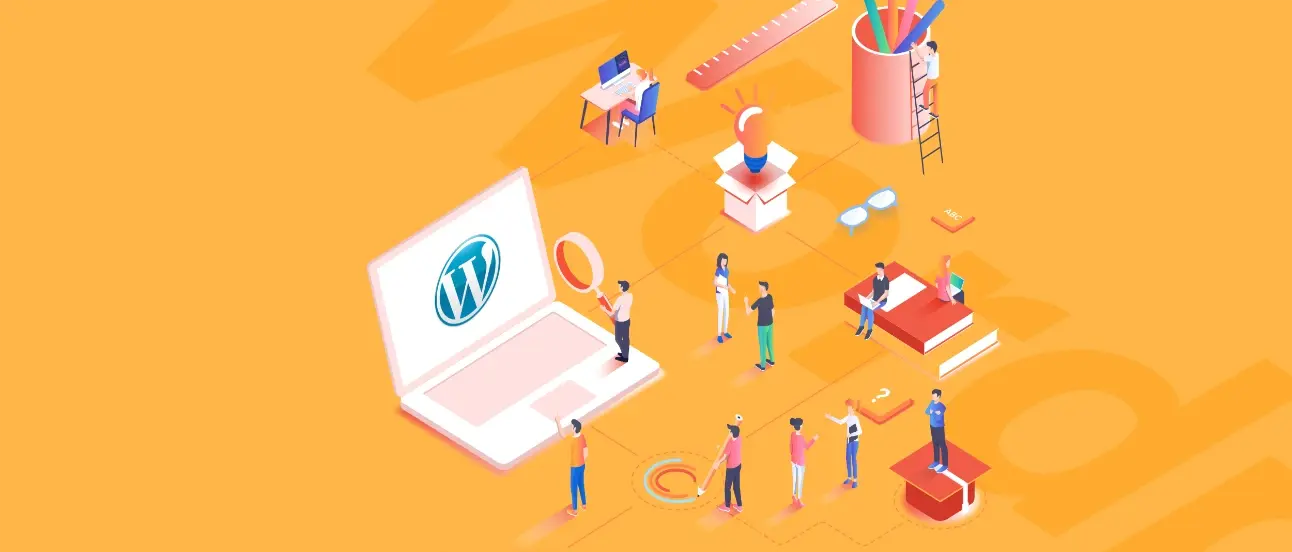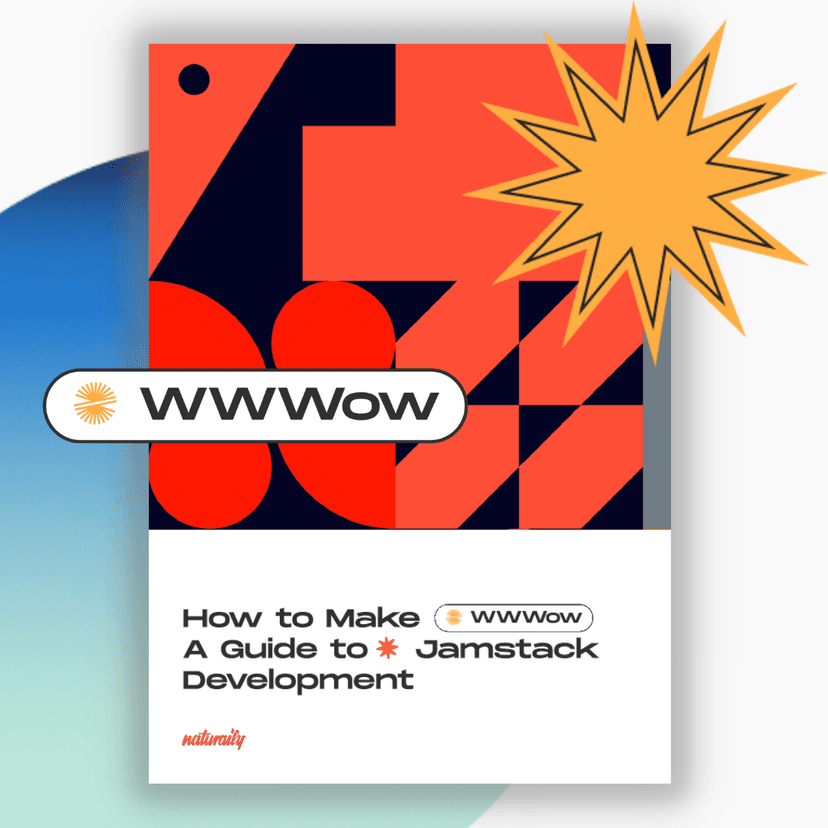Slow WordPress site? Here is 7 proven methods to boost your WordPress speed
WordPress is still one of the most popular CMS out there – it is used by as many as 43% of websites worldwide, and has a 65.2% market share in the content management system industry. Still, the main problem voiced by users and developers is relatively poor performance and low WordPress site speed. Sites go slower and slower with time and there is a relentless search for new methods, techniques, and patches that aim to solve this problem on WordPress websites.

If you’re running a WordPress website, you might have noticed that it’s not always the fastest platform out there. Slow loading times can be frustrating for both you and your visitors, and can even hurt your search engine rankings.
But don’t worry, there are ways to speed up your WordPress site! In this article, we’ll explore 7 proven methods to boost your WordPress speed. Whether you’re wondering “Why is WordPress slow?” or “Is WordPress slow?”, we’ve got you covered. Keep reading to learn how to optimize your WordPress site and improve your user experience.
But maybe it’s all in vain and there is a better overall solution than to fix a slow WordPress? You will find the answer in this article.
We will discuss:
Why site performance is so important in today’s world
How to speed up a slow WordPress site and is it worth trying?
The benefits and future of a completely different approach to building and maintaining websites
Let’s dive into the details!
Why do site performance and speed matter?
Performance may seem to be just one of many factors influencing the overall page quality, but this assumption may be misleading. The numbers indicate that it is among the most important ones.
But before we look at them, let’s summarize what the term means and how we can measure the performance of a website.
Generally speaking, it’s the speed of loading the page or file in the browser. However this value may vary across different pages of the website (high-traffic or content-rich ones tend to load more slowly), and it also depends on geographical location, internet connection, and the user’s device.
WordPress Performance and SEO
Performance is one of the indicators measured by Google while assessing the quality of websites. This, of course, translates to the search engine’s ranking. The better the performance, the higher the chance your page gets to the top of the lists and gains some extra traffic (or any traffic at all).
Remember, your site’s speed may affect your ranking not only directly (because that’s the algorithm), but also indirectly, by increasing the bounce rate and reducing time spent on the website.

Need a better website?
Jamstack development described
Business reasons to switch
How to get started
All you need to know
80 pages for free!
How can you measure WordPress website speed?
You can, for instance, use one of Google's tools called PageSpeed Insights, which allows you to spot performance issues on the website (but also matters regarding usability and accessibility).
You will get an overall score, an actual loading speed, and a list of specific issues (both for mobile and desktop versions), so this tool may extensively help you with boosting your performance.
What does an improvement of a site's performance mean?
In a research report by Deloitte, with the all-telling title “Milliseconds make Millions”, we can find a bunch of interesting numbers about the performance of mobile sites (which are the most popular form of consuming the internet).
According to the research, an improvement of the page speed by just 0.1 second leads, among others, to:
Bounce rates improved by up to 8.3%
Increase in page views per session up to 8%
Increase in conversions up to 10.1%
Increase in average order values up to 9.2%
Improvement of retail customer engagements up to 5.2%
As the page load time goes up, the probability of bounce rates increases significantly – from 32% comparing 1 and 3 seconds to 123% in the case of 1 versus 10 seconds.
Also, 70% of consumers told the researchers it’s the page speed that impacts their willingness to buy products from a particular shop and, according to 10%, slow loading is a reason they would resign from a purchase.
70%
of consumers
say that website's speed impacts their willingness to make a purchase
Source
DeloitteNaturaily.com
So, an improvement regarding a site's performance has a direct impact on funnel progression, especially on e-commerce sites, which translates to a lower bounce rate, more page views, better conversions, and eventually – more profit.
Users don’t like slow websites and they tend to escape from them more frequently. And they might never come back.
How to speed up your WordPress site? Our TOP7 proven methods
So, what to do when your WordPress is slow? Several ways have been invented for WordPress speed optimization. Let’s take a brief look at the most popular ones. Is there a way to successfully fix the problem of a slow site using widely-described methods?
Managing plugins to improve slow WordPress performance
According to popular knowledge, slow plugins are the main culprit of poor performance in the case of WordPress sites. Even if you don’t use your WordPress plugins, they may run in the background all the time, consuming your resources.
They are often open-source and while working together, they may be incompatible, which will further slow the site down.
First, deactivate (or even delete) unused WordPress plugins and see if it affects the performance. Then, look for the highest quality plugins, using the recommendations and reviews you can find online – these should be lightweight and consume only the necessary resources.
This may speed up the overall performance a bit, but it is of course time-consuming and requires recurrent checkups. Moreover, it could mean you will have to get rid of functions that are crucial for your website.
Instead of plugins, you can try implementing microservices. Thanks to their API-first approach, they cooperate and communicate better with each other because they were invented to just do so.

Wish to learn more about Monolithic vs Microservices?
If yes, that's great. We did our best so you can grasp the topic easily!
Choosing a simple WordPress theme for a faster load
Some themes are full of heavy images and other functions that may seem attractive, but they slow down the performance, especially if they are not optimized during the programming stage.
It’s better to choose a lightweight WordPress theme with only the necessary functions, which of course means you can’t go too creative with your features, and you limit the possibilities of providing the best user experience.
Optimizing images & videos to speed up WordPress
Some heavy images may be responsible for lower performance. The solution is to compress them, reducing their sizes without giving up on quality – but finding a perfect balance between those two values may be tricky. You can use a photo edition program or a plugin to do this.
A huge problem may appear when you have hundreds of thousands of pictures, and you have to optimize all of them.
You may even go as far as to host the videos – that are usually the heaviest type of content – on an external server and just embed them in your WordPress, although it means you have to rely on an external service provider and, if it goes down, your videos might be unavailable for some time, and you can do nothing about it.
Implementing lazy loading for enhanced WordPress speed
Lazy loading means that the page is still rendered gradually while the user is looking at the content and discovers more and more of it. Thus, some of the images aren’t loaded until you scroll down to a particular point.
This saves the system from unneeded resource usage and cuts down the initial page load time and initial page weight. It improves the performance but you’d save only a fraction of loading time.
Moreover, if you create pages that are full of picture content, lazy loading can then even slow down your website.
Switching hosting providers to tackle slow WordPress issues
This idea means that you choose the best possible hosting companies and plans out there (including managed WordPress hosting), but it also comes at a price, if you have a lot of traffic and content.
If you opt for shared hosting – the most popular and cheapest option – your performance may suffer if another co-sharing company gets a high number of hits and consumes the available resources.
88%
of consumers
are less likely to return to a site after a bad experience
Naturaily.com
Database and minifying resources for WordPress speed optimization
Over time, your CSS, HTML, and other source code will inevitably build up. This will slow down the site, so you should consider minifying it, which means – as the name indicates – a reduction of its size. If you have a database on your server, you will have to repeatedly perform this operation.
The thing is that you… don’t need a database on your server. This type is called serverless database.

Wish to learn more about Serverless Database?
If yes, that's great. We did our best so you can grasp the topic easily!
Installing the latest PHP version to boost WordPress performance
WordPress sites operate on PHP, which is one of the most basic and “classic” programming languages. It releases regular updates, so you should make sure you have the latest version.
All in all, this method will not change the architecture of the system, which is the main problem here.
Other effective methods to speed up WordPress
We have also a bunch of other ideas on how to improve the load speed of a WordPress site, including:
Using Gzip to compress files
Updating the system regularly (every new WordPress version)
Cleaning the database
Reducing CSS and JavaScript file sizes
Installing a caching plugin
Avoiding redirects
Turning off pingbacks and trackbacks
Limiting external scripts
Optimizing task management according to traffic
Managing blog posts: splitting, paginating, and limiting the number of revisions
All the above methods can help a bit but just look at how much time and effort it will consume, and how many problems you can meet along the way.
Exploring alternative approaches to speed up slow WordPress site
Before we answer this question, we must clarify one thing. Most of the problems connected with performance of WordPress stems from the fact that its architecture is monolithic.
In a monolithic model, all the functions of the applications are gathered in one codebase. It is a large block of code with multiple modules that are coupled together as one inseparable entity.
Are WordPress optimization solutions worth it?
You can try and use multiple techniques to speed up your WordPress site, but none of them will change the core problem: the monolithic architecture.
All your actions will only result in incurring technological debt. Before you start running in circles trying to fix things, you may want to try a completely different approach: the Jamstack method.
Jamstack vs Monolithic: Which is Faster?
Jamstack (short for JavaScript, APIs, and Markup) is a consistent approach to constructing and maintaining websites – it’s a type of architecture where you can have static sites, which are efficient, fast, and secure, featuring dynamic content and allowing for full interactivity and great user experience.
Jamstack usually comes along with an alternative CMS to WordPress – headless CMS – one where the “head” aka the front end is decoupled from the back end, so you can even have multiple front ends working together with one back end.
Other than monolithic WordPress, you have a free choice of front-end technology and tools, and you don’t have to rely on plugins (using them in WordPress can make your website vulnerable to breaches so you may need to deal with fixing URL blacklist errors).
Jamstack - a superior choice for slow website performance enhancement
Those dynamically generated static sites let you enjoy great performance. Why?
First, let’s explain the main difference between static and dynamic sites.
Static ones are pre-rendered, which means that their content has been pre-loaded before any user requested it. They are based on static files which were made using JavaScript, HTML, and CSS. Thanks to that, they can be loaded very fast.
Dynamic sites, on the other hand, are being generated on the user’s request, which takes a lot more time because the page has to be rendered first.
Jamstack sites are by nature static, so they can load fast, but they can contain dynamic content without being connected to the database (as we said, the “head” can be separate from the back end), which is a must in today’s online world full of ever-changing content and fueled by sophisticated user experience.

Utilizing CDN for accelerating WordPress site speed
In the Jamstack approach, you use a content delivery network – a globally distributed network of web servers that enables you to avoid the problems associated with too much distance between your server and the user’s server, making the content highly available to anyone who enters the site, no matter the location or seasonal peaks of traffic.
How does it work? The user has access to a copy of a page situated in an area that is geographically the nearest one – without having to access the central server.
Needless to say, the CDN way is much faster, especially for streaming and downloads. Servers are also optimized to deliver different types of content most efficiently. The CDN not only improves performance but also allows for relieving traffic coming from the infrastructure of the original provider.
Flexibility and creative freedom in WordPress speed optimization
With headless architecture, you can forget all the pains connected with WordPress. A small change to the code cannot break the system. Your marketers can easily just change particular portions of content in a headless CMS without influencing the whole website.
86%
of CMS practitioners
feel highly optimistic about headless Content Management Systems
Source
Kontent.aiNaturaily.com
Also, the whole dashboard is usually more friendly than a slow WordPress admin panel as the best headless CMS solutions have started to emerge and develop a few years after the WordPress release, so they are more up-to-date with their UI.
You have unlimited design freedom and can create any website you like, without having to think about limitations as to the size of images, videos, or themes, or a slow WordPress admin dashboard.

Conclusion - Is It Worth Optimizing WordPress Speed?
Although still the most popular CMS on the market, WordPress may start to lose its position because of its monolithic architecture.
Optimizing its performance makes sense in one case: if you have a simple, rarely updated, and rather small website with low traffic and no need for better SEO, it will work well enough even with WordPress.
In any other case – especially when your traffic and amount of content is significant – you should opt for a headless solution. This is especially important when you take into account that monolithic WordPress limits not only the performance aspects of the website but also the number of ways to create user experiences or design and create particular pages.
At Naturaily, we have vast experience concerning the Jamstack approach – if you want to talk about your project, just let us know.
Let's talk about Jamstack!
Contact us and we'll warmly introduce you to the vast world of Jamstack web development!





